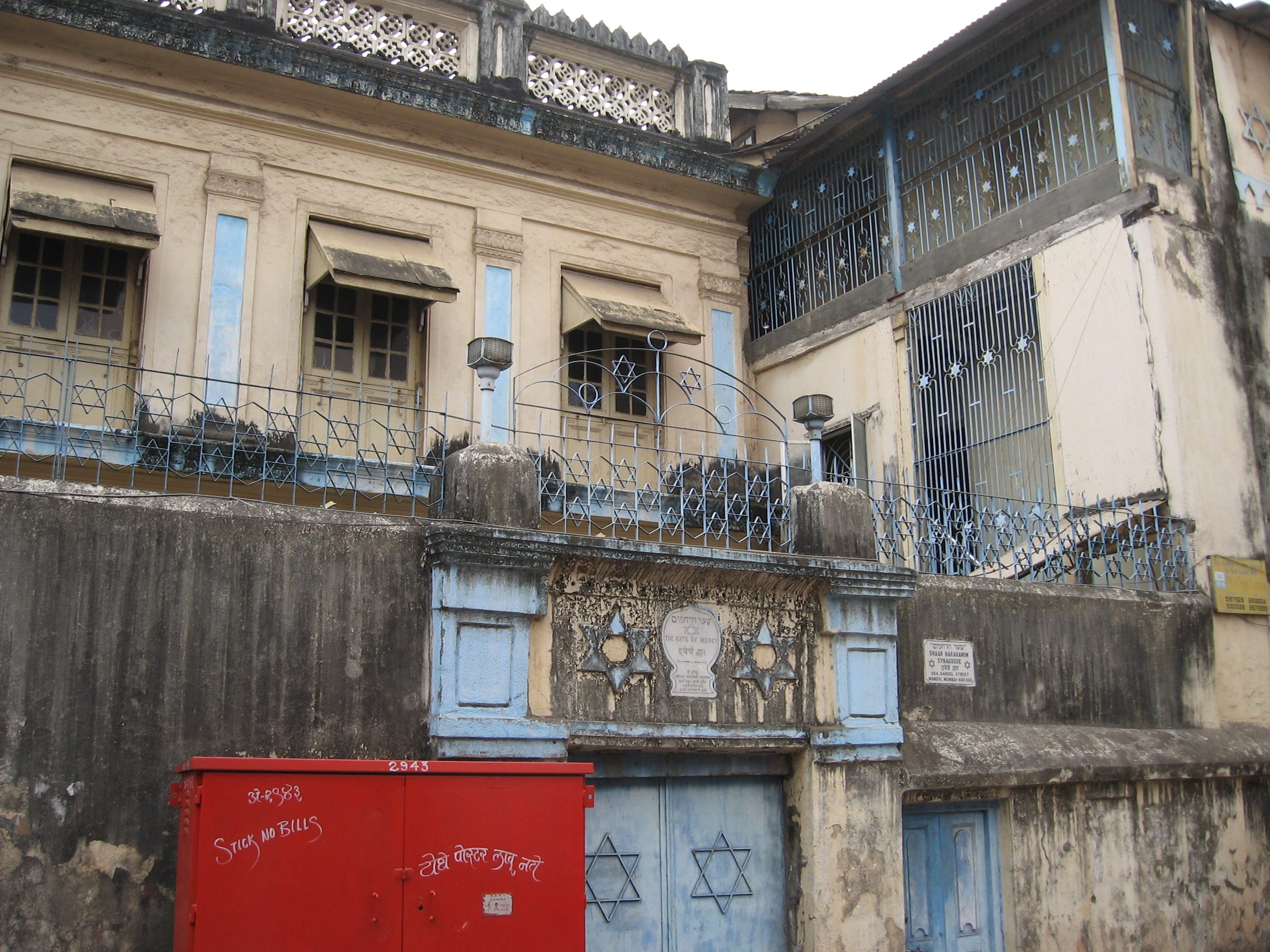- Gate of Mercy Synagogue
Infobox religious building
building_name=Gate of Mercy Synagogue Juni Masjid
caption= Picture of the synagogue in Mumbai
map_type = Mumbai
map_size = 270
map_caption = Location of Gate of Mercy synagogue in Mumbai
latitude = 18.95226
longitude = 72.836373
location = Flagicon|IND Mandvi,Mumbai ,India
religious_affiliation=Orthodox Judaism
rite=Sephardic
district=Konkan
status=Active
consecration_year= 1796
leadership=
website=
architecture_type=
architecture_style=
facade_direction=
year_completed=1796
construction_cost=
architect=
capacity=300
length=
width=
width_nave=
height_max=
dome_quantity=
dome_height_outer=
dome_height_inner=
dome_dia_outer=
dome_dia_inner=
minaret_quantity=
minaret_height=
spire_quantity=
spire_height=
materials=The Gate of Mercy Synagogue (
Hebrew : שער הרחמים) (also known as Shaar Harahamim and Juni Masjid is the oldestsynagogue inMumbai (formerly Bombay),India .cite web|url=http://www.rediff.com/news/2003/sep/11spec.htm|title=For these Jews, Mumbai is the chosen land|last=Masih|first=Archana|date=2003-09-11|work=The Rediff Special|publisher=Rediff.com|accessdate=2008-08-11] The synagogue was built in 1796cite web|url=http://www.haruth.com/AsianIndiaSynagogues.html|title=Indian Synagogues|work=Jewish India|accessdate=2008-08-11] bySamaji Hasaji Divekar (also known as Samuel Ezekiel), aBene Israel i, near Esplanade inSouth Mumbai . The synagogue was later rebuilt and moved to the present location at Mandvi in 1860.cite web|url=http://mdmu.maharashtra.gov.in/pages/Mumbai/bwardplanShow.php|title=Mumbai B Ward Plan|publisher=Department of Relief and Rehabilitation, Government of Maharashtra|accessdate=2008-08-11] In the eighteenth and nineteen centuries, the area was inhabited by a small but thriving Jewish community. It is one of the four synagogues in Mumbai.The local appellation of the synagogue, "Juni Masjid" lends itself to the nearby Central railway station,
Masjid Bunder . Despite a fall in numbers, the synagogue still maintains active services such as a 6AM service. It serves a congregation of about a hundred members daily. The synagogue is also featured on heritage and religious tours of the city.History
According to historical accounts, Samuel Divekar and his brother Issac, served in the
British East India n army as officers. During theAnglo-Mysore Wars , they were captured by the Mysore kingTipu Sultan . They were about to be condemned to death, when Tipu Sultan asked what caste they belonged to. The brothers mentioned that they were Bene Israel. Having never heard of the group, Tipu was about to condemn them to death, when his wife intervened, mentioning that she had heard of the name of the 'caste' in theKoran . Tipu, a devout Muslim spared the two brothers and later exchanged them for a prisoner swap with the British. The two brothers returned to the British enclave of Bombay (now renamed to Mumbai) and built the synagogue in thanksgiving.cite book|last=Goldstein|first=Israel|title=My World as a Jew|publisher=Associated University Presses|date=1984|isbn=0845347802]On
1919-04-02 , the synagogue convened a public meeting of Bene Israeli on the subject ofZionism . Over 350 community members attended, and many were sympathetic to the cause of setting up of an independent homeland ofPalestine though the debate sparked off deep debate on the subject. [cite book|last=Rowland|first=Joan G.|title=The Jewish Communities of India: Identity in a Colonial Era|publisher=Transaction Publishers|date=1008|isbn=0765804395]tructure
The structure can accommodate 300 members, and on
High Holy Days it had large congregations attending. However on theSabbath , not more than 50 attended services. There is also amikvah (bath) present nearby for the religious to purify themselves.ee also
*
Judaism in India
*Synagogues in India
*Bene Israel
*Knesset Eliyahoo References
Wikimedia Foundation. 2010.
